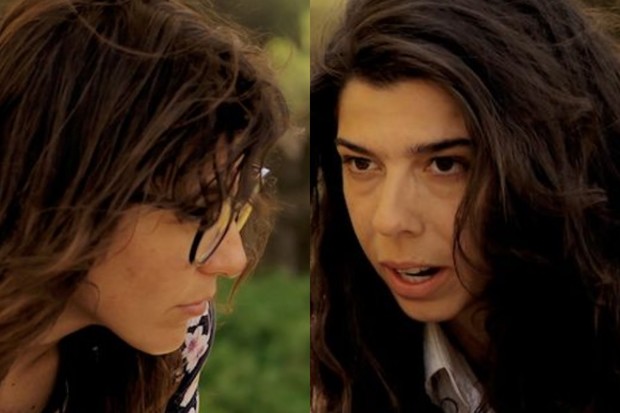LOCARNO 2023 Cineasti del presente
María Gisèle Royo, Julia de Castro • Directors of On the Go
“How can you consider being a mother when it's the first time that the doors are wide open for female filmmakers?”
by Teresa Vena
- The Spanish directors of the experimental road movie open up about motherhood and self-love

The Cineasti del presente section of this year's Locarno Film Festival hosted On the Go [+see also:
film review
trailer
interview: María Gisèle Royo, Julia de…
film profile], the first feature by Spanish directorial duo María Gisèle Royo and Julia de Castro. We talked to the directors about motherhood and self-love.
Cineuropa: Where did the inspiration for the film come from?
Julia de Castro: We got a grant for an artistic residency in Rome, where we met for the first time. We lived together there and spent a lot of time together, which meant we got to know each other very well. At one point, I said that I would like to do a remake of Corridas de alegría. The movie is not very well known, not even in Southern Spain, where it comes from. The film was made in 1982 by Gonzalo García-Pelayo, who is an underground director. He is much better known now. He is quite a character.
María Gisèle Royo: I was surprised that Julia knew the film, since she is not originally from that region. But I thought we should definitely do it; it's a crazy movie. And it feels like the people who made the film had a lot of fun with it. And we were both in need of doing something fun. That's how it started; our feature is an homage to that film, but of course it developed into something new.
How did you work together to develop the script? What were the most important aspects you took into account for your own film?
MGR: There was a lot of dialogue needed to be able to understand each other and come up with something that would represent both of us. It was a slow process, but it was necessary to strike a balance. Moreover, everyone who worked on the film besides us contributed to its final outcome. We had a horizontal approach to being able to stay in this dialogue. Sometimes, even on set, when something came up, we would be able to include it.
How strictly did you follow the script, then?
MGR: Well, there was a script, and all of the scenes were shot on the basis of it. But each day, we would rehearse the scenes for that day and change some of the lines if necessary. There was a written version of everything, but that was enriched constantly.
How did you choose the cast?
JdC: I am an actress myself, and I think I have an intuition for someone who might fit a role but also be able to understand our working process. There are many actors I would like to work with, but I guess for some, it would have been difficult to join this kind of process. In this context, we knew that Omar Ayuso would be the right person; we knew he would be flexible enough for it.
One of the biggest topics in the film is motherhood. What was the most important thing you wanted to convey about it?
MGR: First, we wanted to address the social and biological pressure on women of a certain age, as they’re told they are running out of time to become mothers. This is something we share. We are living in a time in history with the most opportunities for women. How can you consider being a mother when it's the first time that the doors are wide open for female filmmakers? So let's seize this chance, even if it might mean that we run out of time. This time pressure was at the core of Milagros's character. We wanted to ask each and every woman why we would want to be mothers in the first place. This is to avoid reacting only because we might run out of time.
JdC: Maternity is not a topic with a dramatic meaning for us. We wanted to discuss it in the most pragmatic way possible. As for myself, I had started with the process of becoming a single mother, but then working on the film changed my perspective. Spending time on it may have closed the window for becoming a mother.
Are you a fan of old cars?
JdC: I have a radio show about cars. So, yes, I have an intense relationship with them.
What were the symbols attached to the sea and the mermaid?
MGR: We wanted to play with symbols in a surrealistic way. The idea of the mermaid drying out is also the idea of the woman running out of time. The character also functions as a mirror for the character of Milagros.
What were the most important elements for the visual concept?
MGR: We used 16 mm film in order to have the same format as the original movie. Since we didn't have too much money, we often did only one take and used the imperfect images in the editing process as part of the concept.
Did you enjoy reading this article? Please subscribe to our newsletter to receive more stories like this directly in your inbox.















